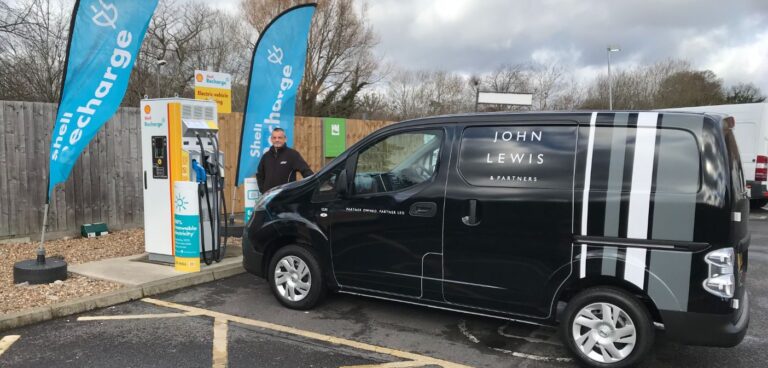The John Lewis Partnership (JLP) has announced plans to replace its home services fleet with electric vehicles as part of its commitment to transition 4,000 cars, vans and light trucks to EVs by 2030.
JLP is being supported by EV technology specialist Flexible Power Systems, (FPS), which is establishing a mixed charging solution incorporating depot, public network and home charging.
The trial will start next month and FPS will integrate data collected into a wider electrification plan for the 350 home services vehicles, which provide home estimating and fitting services for John Lewis. The project follows a joint wireless van charging trial currently underway at Waitrose at St Katharine Dock in London.
According to JLP, by 2028 all its HGVs will be running on biomethane and its delivery and home services fleet will be electrified by 2030. A fossil-free fleet will reportedly give JLP an 80% carbon reduction versus BAU diesel and an estimated 504,000 tonnes of CO2 saving.
Kate Cosco, product services field manager, JLP, said: “This is another step along the path of the John Lewis Partnerships ambition to move completely away from fossils fuels in the fleet by 2030, saving an estimated 500,000 tonnes of CO2 between 2020 and 2030.
“This is a wonderful opportunity to test how electric vehicles work for us in home services. The team is extremely excited to get out on the road and to begin driving these new vehicles.”
Michael Ayres, managing director of Flexible Power Systems, added: “Replacing commercial diesel fleets with electric vehicles is just one part of the picture. We need to bring together the ecosystem of chargers, power management and operational interfaces required to keep fleets serving customers efficiently.
“Like many company car drivers, home services partners have a range of working patterns and living arrangements, we need to ensure we can offer a flexible and scalable charging solution to fit these needs via depot, home or public network charging.
“It’s essential to collect data through trials like this one, to inform and de-risk the very substantial decarbonisation investments in vehicles and infrastructure fleets are planning.”





